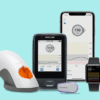Over three percent of Americans struggle with PTSD (post traumatic stress disorder). This condition can be caused by different life events – some people might struggle with things that happened at war, and some people might be weighed down by events that happened in everyday life.
Ultimately, treating PTSD isn’t just about what caused it – it’s about the journey to healing.
Check out this guide to treating PTSD, however, it happened.
Get Professional Help:
Getting professional help is a crucial step in treating PTSD. Different mental health experts are trained to assess and diagnose PTSD, offering specialized interventions to address its symptoms.
Therapy is a cornerstone of PTSD treatment, with various evidence-based approaches available.
Cognitive Behavioral Therapy is another of your many treatment options. It’s often used to help individuals identify and change negative thought patterns associated with traumatic experiences.
EMDR is another effective therapy. It involves guided eye movements to process distressing memories. Exposure therapy helps individuals confront and gradually desensitize themselves to triggering situations.
In addition to therapy, medications may be prescribed to manage PTSD symptoms such as anxiety and depression.
Consulting with a psychiatrist can help determine the appropriate medication and dosage based on individual needs. There are even new treatments coming every day, like using ketamine for PTSD.
Self-Help Strategies:
Engaging in self-help strategies can be an important complement to professional treatment when addressing post-traumatic stress disorder.
Incorporating mindfulness and relaxation techniques into daily life can aid in managing anxiety and stress.
Techniques such as deep breathing, different types of meditation, and progressive muscle relaxation provide tools to ground oneself during moments of heightened distress.
Building a robust support system is another key self-help strategy. Sharing your PTSD struggles with your loved ones fosters a sense of connection and understanding.
Lifestyle Changes:
Embracing lifestyle changes is a good way to help yourself cope with PTSD.
Physical activity has been shown to help with other mental health symptoms that often co-exist with PTSD. Engaging in activities like walking, jogging, or yoga not only improves your physical health but also provides a constructive outlet for stress and tension.
Maintaining a balanced and nutritious diet is crucial. Nutrient-rich foods can positively influence mood and energy levels, contributing to an overall sense of wellness. You may also want to avoid excessive caffeine or sugar intake. They can exacerbate anxiety.
Support Groups:
You don’t have to go it alone. Talking to others can help, even if you don’t have precisely the same causes for your PTSD.
Participating in support groups provides a platform for different people to share their experiences openly and without judgment. This sharing of personal stories can create a validating environment, helping participants realize they are not alone in their struggles.
Peer support can be uniquely impactful, offering insights, empathy, and practical coping strategies from those who have navigated similar journeys.
Treating PTSD However, It Happened: Start Today
There are a lot of venues for treating PTSD, however, it happened. Now that you know how to get started, you can work towards feeling better.
Do you need more help living your best life? Look through some of our other posts for strategies to improve your mental health and so much more.










